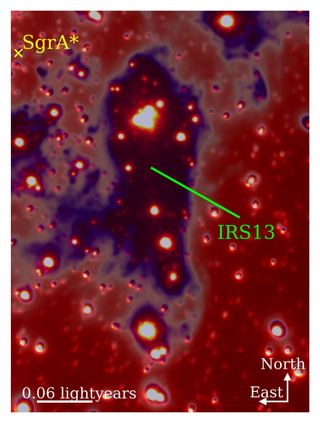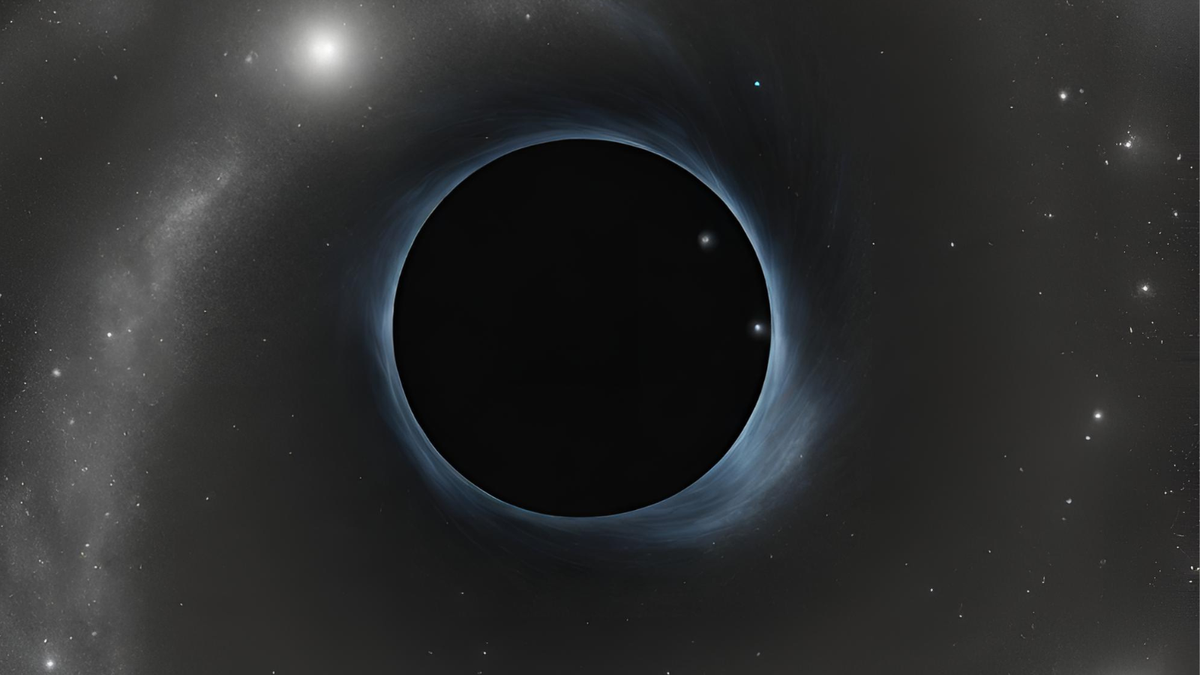For decades, astronomers have searched without much joy for signs of “missing link” black holes, aka black holes with masses between those of “stellar-mass black holes” and “supermassive black holes.” The former have been seen scattered across the universe, and the latter are cosmic titans that dominate the hearts of galaxies — but when it comes to intermediate-mass black holes, scientists have seen evidence of only about ten.
As reported Earlier this monthinformed researchers to use data from Hubble Space Telescope revealed the best evidence yet of an intermediate-mass black hole i Omega Centauri, the remnants of a galaxy are cannibalized by Milky Way. And yes, it looks like searching medium-mass black holes is much like waiting for a bus in London; you wait an age for one, and then two appear at once!
A separate team of scientists has discovered evidence of another medium-sized black hole, this time lurking near the supermassive black hole Sagittarius A* (Sgr A*) in the heart of the Milky Way, about 27,000 light years from Earth.
The team, led by Florian Peißker of the University of Cologne, discovered this intermediate-mass black hole while assessing the IRS 13 cluster, which is about 0.1 light-years from Sgr A*.
Related: Over the past 25 years, black hole physicists have revealed the unimaginable
“IRS 13 appears to be an important building block for the growth of our central black hole Sgr A*,” Peißker said. “This fascinating star cluster has continued to surprise the scientific world ever since it was discovered about twenty years ago. At first it was thought to be an unusually heavy star. However, with high-resolution data, we can now confirm its building block composition with an intermediate-mass black hole at its center. “
Searching for the missing void of the universe
Stellar mass black holes with between five and 100 solar masses are known to form via collapse of stars with at least eight times the mass of our star. However, supermassive black holes must have a different origin, as no star can be massive enough to collapse and leave a remnant million or even billions times as massive as the Sun.
This information has led researchers to theorize that supermassive black holes must be born through fusion chains of progressively larger and larger black holes. These cosmic titans are also believed to grow by hungrily feasting on the matter around them, including the eventual unlucky star that wanders too close and is shredded then thrust into the black hole of a so-called “tidal disturbance event” or “TDE.”
That means there should be a population of black hole “seeds” in the cosmos that exists in the huge mass gap between stellar mass and supermassive black holes that have not yet achieved “supermassive status” but are still too massive to have formed from a collapsing star. Yet these medium-sized black holes have been frustratingly difficult to detect.

Like all black holes, medium-mass black holes are bounded by a light-trapping “surface” called the the event horizon. Thanks to this boundary between the observable universe and whatever is inside a black hole, not only is it impossible for any signal to travel from the interior of a black hole to the wider cosmos, but it is also effectively impossible to “see “a black hole. That is, unless it tears apart stars in bright TDEs or feasts on the matter around it, which would heat and shine brightly.
However, intermediate-mass black holes have failed to reach supermassive sizes because they are not surrounded by an abundance of material to feed on, so they do not exhibit bright emission of light in their surroundings, meaning they are essentially completely dark. Thus, scientists must use clever techniques to detect non-feeding intermediate-mass black holes. For example, they look at the behavior of visible matter around black holes, such as stars, to see if they are affected by any gravitational effects. If so, these effects could be mediated by a nearby black hole.

While looking at IRS 13, Peißker and colleagues saw the stars in this cluster at the heart of the Milky Way moving in an orderly pattern. This was surprising as the team had expected the stars to be sorted randomly.
There may be two explanations for this observation. Either IRS 13 interacts with Grade A*and this causes its stars to move in an orderly manner, or there is a great gravitational influence in this cluster that keeps it orderly.
Using instruments such as Very Large Telescope (VLT)the Atacama Large Millimeter/submillimeter Array (ALMA) and that Chandra X-ray Space Telescopethe researchers were able to determine that the well-ordered compact shape of IRS 13 may indeed be due to the presence of an intermediate-mass black hole located at the center of IRS 13.
This finding is supported by astronomers seeing X-rays from the star cluster, which indicate ionizing gas rotating at speeds of many hundreds of thousands of miles per hour. The hot ionized gas may swirl around the belly of this newly discovered intermediate-mass black hole.
Not only would this provide astronomers with another “missing” black hole link, but the findings could also explain a lingering mystery surrounding IRS 13. The cluster had appeared to be much denser than other similar clusters in our galaxy – but that would be expected if it hosts an intermediate-mass black hole.
The team now intends to follow up this research by examining IRS 13 with James Webb Space Telescope (JWST) and that Extremely Large Telescope (ELT), currently under construction atop Cerro Armazones in the Atacama Desert in northern Chile.
The team’s research was published on July 18 in the The Astrophysical Journal.
#Scientists #Waited #Ages #Find #Missing #Link #Black #Hole #Stumbled
